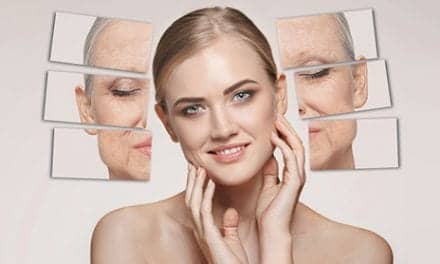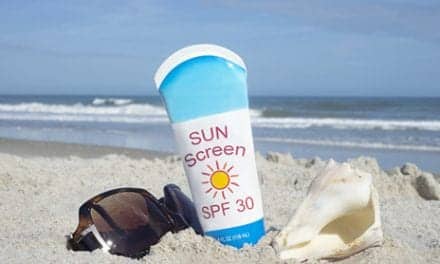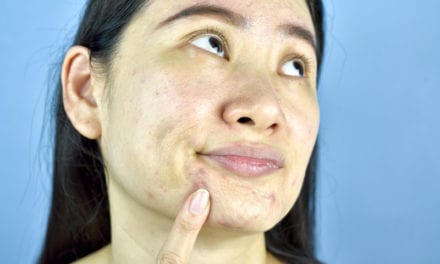What’s new in ablative and nonablative skin-rejuvenation technology

Before patients are seen by the laser surgeon for a single ablative treatment, or are scheduled to undergo a full series of nonablative treatments, a full history and appropriate physical examination are required. Prior to selecting the appropriate intense pulsed light (IPL) or laser device, the Fitzpatrick classification of the patient’s skin type should be identified. The patient’s medications must also be noted. Recent sun exposure or the use of isotretinoin within 1 year prior to treatment are two contraindications to treatment. Any suspicious pigmented or nonpigmented skin lesions should be recognized and treated appropriately prior to the initiation of treatment. Photographic documentation of the patient is useful and necessary.
One decade ago, the only laser-resurfacing modality available to the plastic surgeon was the CO2 laser, which operated at 10,600 nm. This “high-tech” device competed with the traditional ablative techniques such as chemical peels (phenol and TCA) and mechanical dermabrasion. With this laser, the aesthetic surgeon was able, with two or three passes, to ablate the epidermis and superficial layers of the dermis down to the papillary-reticular junction rapidly, reliably, and reproducibly. In addition, because of its relatively weak absorption by its target (water), significant heat was generated along with the ablation of tissue. This heat achieved total hemostasis and resulted in collagen denaturation and skin contracture. Along with this shrinkage of the target tissue came a number of complications, including depigmentation, delayed healing, prolonged erythema, and occasional scarring. This was secondary to the thick zone of thermally injured tissue left behind. As a result, the CO2 laser as a single, therapeutic modality fell into disfavor among many aesthetic laser surgeons.
Today a multitude of devices—such as lasers, IPLs, light-emitting diodes, and radiofrequency (RF) units—are available to perform facial-rejuvenation surgeries. Aesthetic surgeons with active components to their practices can treat and improve the texture, and can even out and reduce the pigmentation, of their patients’ skin. The patients’ own collagen production can be stimulated to decrease the appearance of wrinkles and pores.
There are two categories of laser-resurfacing devices. The first is lasers that remove or ablate the epidermis and dermis.
Ablative Resurfacing Devices
These devices include the CO2 laser, the erbium laser (2,940 nm), and the blended laser, in which both 10,600-nm and 2,940-nm wavelengths are combined. Resurfacing with the CO2 laser alone generally required either intravenous sedation or general anesthesia. Erbium laser resurfacing can usually be performed under a topical and/or local anesthetic alone. In addition, because of the erbium laser’s high affinity for absorption by water, much less heat is generated in the dermis, resulting in a much thinner zone of thermally injured tissue. This in turn results in faster healing, a shorter period of erythema, and fewer complications. Unfortunately, little to no skin tightening is seen with the erbium laser alone, the procedure is not hemostatic, and many more passes are required to achieve the same depth of penetration that can be achieved with a single pass of the CO2 laser.
In my practice, I continue to use both CO2 and erbium lasers, having available a pure CO2 laser, a blended CO2/erbium laser, and a pure erbium laser. For lighter, or so-called overnight and weekend peels, I prefer the pure erbium laser. Its laser beam, or spot, has a top hat-shaped configuration, enabling me to achieve a very even and smooth ablation in two to three passes. Patients do not require sedation or local anesthesia but can be treated with a topical anesthetic alone. Postoperative care is simply a liberal application of healing ointment. There is no bleeding and minimal erythema, and complete healing (depending on the number of passes) is accomplished in 2–5 days. Superficial pigmentation is removed, and the patient’s skin is left smoother and refreshed, with a reduction in the appearance of wrinkles and pores.
In patients who require a deeper ablative resurfacing, I use CO2 and erbium in combination. I use the CO2 for the first one or two passes. This achieves rapid ablation and skin contracture and is hemostatic. I then use the erbium laser for an additional one to two passes to thin out or remove the zone of thermally injured tissue that is left behind. In a study comparing CO2 resurfacing alone, erbium resurfacing alone, and sequential, combined CO2 and erbium resurfacing, the combined group achieved the tightening and resurfacing of the CO2 laser with the rapid healing and lower complication rate of the erbium group.
As an aside, I find the CO2 laser to also be a useful tool for nonaesthetic procedures. It can be used to achieve rapid de-epithelialization of flaps and pedicles in breast reductions and mastopexies. It is also a very hemostatic cutting instrument. I have used it frequently in small excisions in ambulatory patients who are anticoagulated and, for medical reasons, cannot have the anticoagulation conveniently stopped.
A newer type of ablative technology is fractal resurfacing. The fractal devices ablate a pattern of extremely narrow diameter and shallow holes, in a wine-rack pattern. The concept of fractal technology is as follows: If the epidermis and dermis between the holes is left intact, one can achieve rapid healing from the uninjured skin at the same time that the skin is rejuvenated.
The ablative resurfacing procedures performed today, however, probably represent a minority of the total number of resurfacing procedures performed in aesthetic surgeons’ offices. One reason for this is the negative publicity associated in the past with pure CO2 resurfacing. The other is the availability of many other nonablative light devices.
Nonablative Light Devices
In nonablative laser or light resurfacing, the tone, texture, and pigmentation of the patient’s skin is improved—hopefully without creating any wound to heal or a prolonged period of erythema to resolve.

|
The target, or chromophore, in ablative resurfacing is water. Because water is present throughout all cells, it is a nonspecific target. The laser light energy is absorbed by the water, heat is generated, and the entire cell is destroyed or ablated. In nonablative resurfacing, the goals include increasing collagen production, eliminating redness (such as spider veins and rosacea), decreasing hyperpigmentation, and tightening the skin. The goal in nonablative resurfacing is to achieve correction of the “problem” without injuring the surrounding tissue.
One way to achieve this is to select a wavelength of laser light that has a much more limited and specific target. The two most common specific targets are melanin and hemoglobin. If the physician targets melanin, unwanted skin pigmentation can be eliminated. Hemoglobin is the target for the treatment of spider veins, telangectasia, and rosacea. There is a wide range of light-based technologies to treat this problem today, including IPL, laser, and RF. Protection of the epidermis is most commonly achieved with inherent or built-in contact cooling, or with a cryogen spray. The advantage of the contact cooling is that it does not require any additional disposables, and that some patients find it more comfortable than cryogen.
Patients who come for consultation for treatment of facial hyperpigmentation and vascular deformities do not want to hear that they are going to suffer any downtime. They are looking for a true lunchtime peel, so that when they leave the laser surgeon’s office they can reapply their makeup and return to work. Through manipulations of wavelength, fluence, and pulse width, this can be achieved using today’s light-based devices. The downside for the patient is that it cannot be achieved in a single session. In the consultation, I explain to the patient that we are going to gently and gradually correct their pigmentary and textural problems; but to do so without any downtime, we will require three to six treatments spaced 1 month apart. In addition, I explain that to maintain their correction, single-session maintenance treatments will be required every 3–6 months.
Most of my patients who seek consultation for correction of hyperpigmentation and vascular lesions also want to reduce the appearance of their wrinkles and pores. Fortunately, the light devices used for correction of pigmentation can also, by increasing collagen, correct these other two signs of aging as well. I am currently using both IPL and laser technology to achieve these corrections. I have had the most success using the IPL, 532-nm, and 1,064-nm lasers.
The latest IPL has eliminated many of the problems I had with earlier generations of these devices. This has been achieved with integral contact cooling, high- and low-end filters, proprietary pulse forms, and the ability to manipulate fluence with long pulse widths. In addition, its large spot size and relatively rapid firing rate lead to shorter session times. As with all IPL devices, patients with recent sun exposure cannot be treated for at least 1 month. With its modular approach to handpieces, my IPL device can also be used to treat all skin types for hair removal.

In my practice, patients undergoing nonablative resurfacing are treated without any topical anesthetic. All makeup is removed, and patients will often be treated with a microdermabrasion machine prior to treatment with the IPL device or laser. I prefer to coat the patient’s skin with a very thin layer of chilled ultrasound gel—not only for epidermal protection, but also because it helps the handpiece glide smoothly over the patient’s skin. After treatment, any areas of erythema may be treated briefly with the application of ice and a mild steroid cream. Recently, as a final step, I have been treating all patients with a light-emitting diode (LED). I believe that it further decreases any erythema and may help in increasing collagen production in the skin.
Other targets of nonablative resurfacing devices include (again) water and subcellular light receptors. Examples of two such devices include lasers operating at 1,320 nm and LEDs. The 1,320-nm laser has gone through two major modifications. The current model I use employs a topical cryogen spray that can be controlled with a prelaser, midlaser, and postlaser cryogen pulse. The laser penetrates into the deep dermis, where light energy is absorbed by water. The resulting heat injury leads to a stimulation of collagen deposition in the patient’s skin. Maximum results are usually not seen until after 6 months, but 75% of the new collagen is said to remain after 1 year.
Patients treated with the 1,320-nm laser generally need pretreatment application of a topical anesthetic. Post-treatment protocols include the application of ice and topical, mild steroid creams. I now treat all patients with the LED device after the 1,320-nm laser treatment. I have found that the 1,320-nm laser is extremely effective for not only crow’s feet and superficial wrinkles, but also for acne scars.
Laser treatments are initially given to the patient in a series of three sessions spaced 1 month apart. I often incorporate an IPL or another laser series, alternating the treatments every 2 weeks. Combining ablative and nonablative treatments with erbium ablative resurfacing and 1,320-nm nonablative resurfacing is a very effective means of correcting rhytides and acne scars. All the nonablative IPL devices and lasers mentioned above can also be used to treat acne.
Photomodulation of the skin is one of the new areas of aesthetic skin treatment using light devices. A 590-nm pulsed LED is believed to activate photoreceptors at the subcellular level. This has three effects: It increases the levels of collagen in the skin (reducing wrinkles and pores), it decreases redness (vascularity and erythema), and it reduces hyperpigmentation. In the original studies, patients were treated twice a week for 8 weeks and then once a month as a follow-up. A pretreatment microdermabrasion is felt to complement and improve the treatment. The photomodulation device I use incorporates a proprietary pulsed sequence of 590-nm LED light over a 35-second period without any user input. The treatment is painless and only requires that the patient wear goggles. In our practice, it is used as a stand-alone series or in conjunction with other treatments.

Kenneth O. Rothaus, MD, is an honors graduate of Yale College and Harvard Medical School. He maintains a private practice in aesthetic surgery and lasers in Manhattan and is the Medical Director of the Aesthetic Laser Center at the New York Presbyterian Hospital Cornell Weill Center. A published author, he travels nationally and internationally, training other physicians in aesthetic laser techniques. He can be reached at (212) 746-4949 or [email protected].





